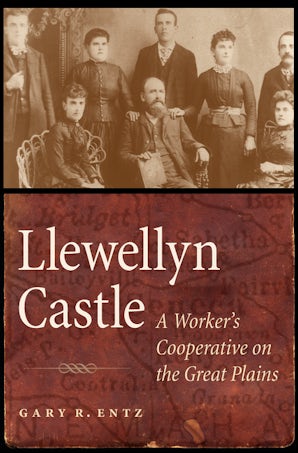
288 pages
3 maps
May 2022
978-1-4962-0948-1
$50.00 Add to CartDecember 2013
978-0-8032-4845-8
$50.00 Add to CartIn 1869 six London families arrived in Nemaha County, Kansas, as the first colonists of the Workingmen’s Cooperative Colony, later fancifully renamed Llewellyn Castle by a local writer. These early colonists were all members of Britain’s National Reform League, founded by noted Chartist leader James Bronterre O’Brien. As working-class radicals they were determined to find an alternative to the grinding poverty that exploitative liberal capitalism had inflicted on England’s laboring poor. Located on 680 acres in northeastern Kansas, this collectivist colony jointly owned all the land and its natural resources, with individuals leasing small sections to work. The money from these leases was intended for public works and the healthcare and education of colony members.
The colony floundered after just a few years and collapsed in 1874, but its mission and founding ideas lived on in Kansas. Many former colonists became prominent political activists in the 1890s, and the colony’s ideals of national fiscal policy reform and state ownership of land were carried over into the Kansas Populist movement.
Based on archival research throughout the United States and the United Kingdom, this history of an English collectivist colony in America’s Great Plains highlights the connections between British and American reform movements and their contexts.
“Llewellyn Castle will be quite important to specialists in regional history, British history, and communal studies. . . . [This is] scholarship at its finest.”—Timothy Miller, author of The Quest for Utopia in Twentieth-Century America, 1900–1960
“Gary Entz’s discussion of the Populists’ subtreasury plan . . . represents an original and path-breaking analysis and [is] a real contribution to the historiography of American populism.”—Jim Bisset, author of Agrarian Socialism in America
List of Maps
Preface
Introduction: Llewellyn Castle
1. The Sorrow of the Land: Bronterre O’Brien and the National Reform League
2. High Moral Chivalry: The Mutual Land, Emigration, and Cooperative Colonization Company
3. An Honest Social State: The Workingmen’s Cooperative Colony
4. Moral Intoxication: Frederick Wilson
5. Hold Up the Lamp of Hope: John Radford
Conclusion: The O’Brienites
Appendix
Notes
Selected Bibliography
Index